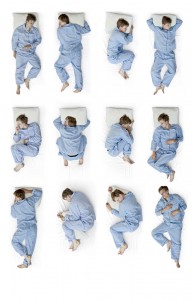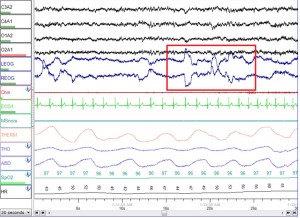 Knowing the difference between simple snoring and sleep apnea is key to effective treatment. While snoring results from the relaxed tissues in the throat blocking the airway partially, sleep apnea involves frequent, loud snoring combined with a cessation of breathing. The best way to determine if a patient has OSA is through a sleep study in which breathing and other body functions are monitored overnight. Screening questionnaires which are often used to determine if a patient requires a sleep study are:
Knowing the difference between simple snoring and sleep apnea is key to effective treatment. While snoring results from the relaxed tissues in the throat blocking the airway partially, sleep apnea involves frequent, loud snoring combined with a cessation of breathing. The best way to determine if a patient has OSA is through a sleep study in which breathing and other body functions are monitored overnight. Screening questionnaires which are often used to determine if a patient requires a sleep study are:
- Epworth Sleepiness Scale: Questionnaire in which a patient rates the chances of falling asleep in various situations. The scale is used to assess the patient’s daytime sleepiness levels from supernormal to dangerously sleepy.
- The Rome Questionnaire: A 7 item questionnaire which is used in conjunction with Body Mass Index (BMI) to identify a patient’s risk of OSA.
During sleep testing, the persistence and loudness of snoring are typically recorded, as well as body position and the sleep phases in which the snoring occurs. Common sleep studies include:
-
 Nocturnal polysomnography: While the patient sleeps, equipment monitors breathing patterns, heart, lung, and brain activity, leg and arm movement, and blood oxygen levels. The polysomnography reports the respiratory disturbance index (RDI), which is the number of apneas or hypopneas lasting 10 seconds or more per hour of sleep. A patient with an RDI of 5 or less is considered a simple snorer with no OSA. An RDI of 5-15 suggests mild OSA, 16-30 indicates moderate OSA, and more than 30 indicates severe OSA.
Nocturnal polysomnography: While the patient sleeps, equipment monitors breathing patterns, heart, lung, and brain activity, leg and arm movement, and blood oxygen levels. The polysomnography reports the respiratory disturbance index (RDI), which is the number of apneas or hypopneas lasting 10 seconds or more per hour of sleep. A patient with an RDI of 5 or less is considered a simple snorer with no OSA. An RDI of 5-15 suggests mild OSA, 16-30 indicates moderate OSA, and more than 30 indicates severe OSA.
- Home Sleep Test: A simpler test using portable monitoring devices to measure heart rate, blood oxygen level, and airflow and breathing patterns.
Types of ambulatory monitors your doctor may recommend:
- Eden Trace: Monitors oxygen saturation, chest wall impedance, nasal and oral airflow, heart rate, and body movement.
- The Nightwatch System: Records eye, leg, chest and abdominal movement, heart rate, nasal oral airflow, and body position. This system can calculate the patient’s RDI and send 2 minute sections of recordings for lab analysis.
- The MESAM IV System: Analyzes heart rate, snoring, and saturation change to determine sleep disordered breathing.
- WatchPAT200: The peripheral arterial tonometer (PAT) is a wrist worn device which detects obstructive occurrences.
In some cases, a sleep endoscopy may be required to determine what is obstructing the upper airway, especially if a blockage in the nose or throat is suspected.
If you have any issues with snoring or possibly obstructive sleep apnea, schedule an appointment with one of our physicians at Fort Worth ENT & Sinus. Please complete an online appointment request or phone 817-332-8848.


